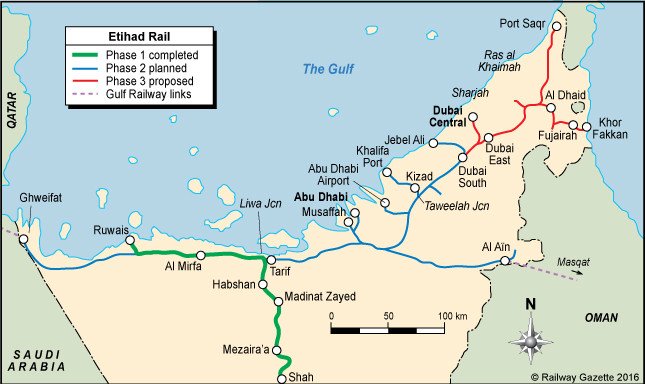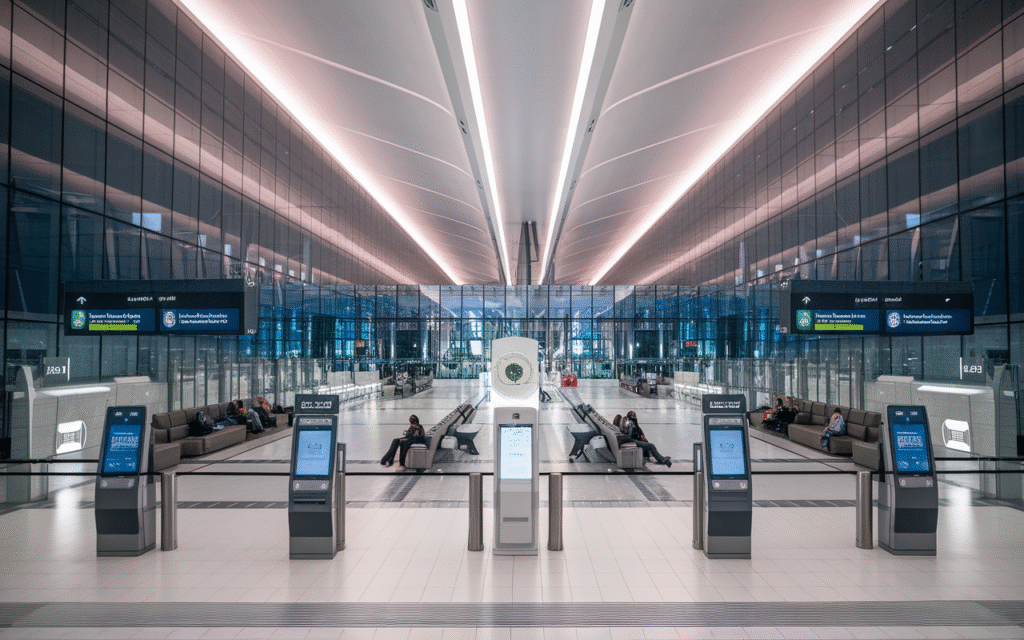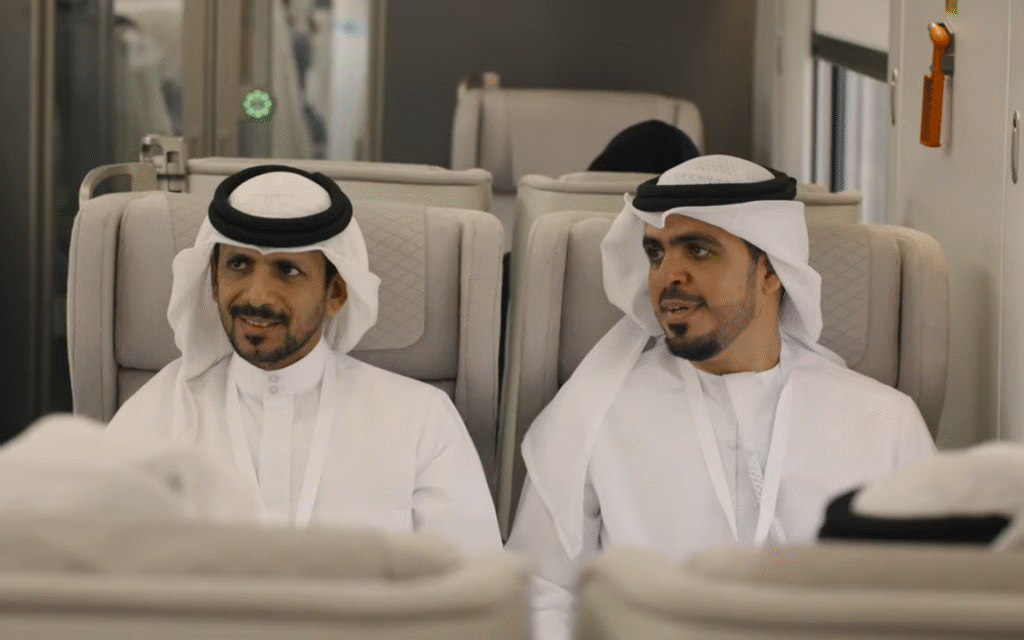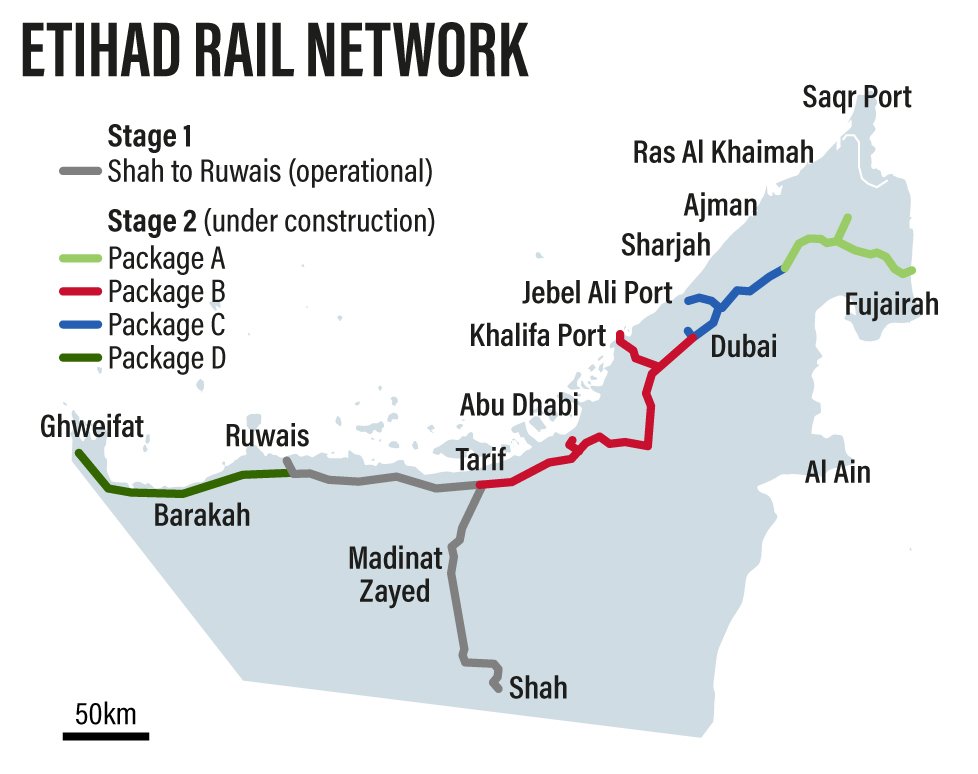Etihad Rail is a massive transportation initiative designed to connect all seven emirates. One of the most exciting features is that travelers will soon be able to reach Abu Dhabi in just 30 minutes via Etihad Rail. While the project is still in progress, passenger services are expected to launch soon. It was recently confirmed that the service will commence in 2026. Etihad Rail promises a faster, greener, and more convenient way to journey throughout the UAE.
Once operational for passengers, Etihad Rail is expected to accommodate up to 36.5 million travelers annually. Curious about when you’ll be able to ride? Below is all the currently available information. Etihad Rail consists of two major phases.
Etihad Rail Stations Project – Phase I Summary

The Etihad Rail venture started in June 2009. By 2016, Phase One was complete, and two trains were set into operation. Each train has the capacity to haul 22,000 tons of sulfur in 110 wagons. Impressively, each of these trains can replace 300 cargo trucks, cutting carbon emissions by as much as 80 percent.
To support this phase, the UAE imported seven electro-diesel locomotives and seven advanced signaling systems from the U.S., preventing derailments. These trains are equipped with state-of-the-art braking systems for enhanced safety. An empty wagon weighs 30 tons, and when loaded, its total weight climbs to 130 tons.
The advanced system of Etihad Rail monitors all movement and signals from the train cab. This data is transmitted to a radio block system, allowing precise tracking of the train’s location and direction.
Etihad Rail Stations Phase II Summary
Phase Two has successfully connected all seven UAE emirates, and plans are underway to expand the network to five neighboring GCC nations. This phase includes the addition of 605 kilometers of track, stretching from the Saudi border at Ghuwaifat to Fujairah.
During this stage, 38 new locomotives were brought in—each designed to pull trains with up to 100 wagons. These trains are capable of replacing 5,600 cargo trucks.
The network includes Abu Dhabi, Kedah, Port Khalifa, Port Jebel Ali, Sharjah, Ras Al Khaimah, Dubai, and Fujairah. The system is also planned to integrate with Saudi Arabia’s existing rail line in Riyadh. Different cargo types will be transported using purpose-specific wagons.
A partnership between China State Construction Engineering Corporation and SK Engineering & Construction of South Korea was selected for Package A. Their role involved the design, construction, and civil work on a 139-kilometre stretch between Ruwais and Ghuwaifat.
Construction of Stage 2’s Package A is now complete. This section connects Al Ghuwaifat at the Saudi border to the Phase I route, which runs 264 kilometers from Habshan to Al Ruwais.
Where Will the First Etihad Rail Passenger Station Be?
The first passenger station will be located in the heart of Fujairah at Sakkam.
As of March 2024, a second passenger station has been confirmed near the University of Sharjah.
Initially, the Etihad Rail passenger service will operate between the emirates of Abu Dhabi and Dubai.
Etihad Rail Station Map

Main Stations Include:
- Abu Dhabi Central (Downtown hub)
- Dubai International (Near Expo City)
- Sharjah Station (Near bus/metro)
- Fujairah Port (Passenger & Freight)
- Al Ain Station (Future expansion)
Destinations Covered by Etihad Rail

Etihad Rail will connect key urban centers across the UAE, streamlining both passenger movement and freight logistics. Abu Dhabi Central Station will serve as a major hub near the Corniche, providing seamless access to bus and taxi services.
Amenities at this station will include parking, retail shops, and lounges. The Ruwais Freight Terminal will be crucial for transporting industrial materials, supporting the region’s trade operations.
Dubai International Station will be located near Expo City, offering direct links to the Dubai Metro. This station is expected to boost tourism and business travel, reinforcing Dubai’s international standing.
Sharjah Station will integrate with Al Jubail Bus Station, easing commuter transitions. More stations will open in other emirates as the network grows, creating a unified national rail system.
Travel Times & Connectivity
Etihad Rail is transforming UAE travel by drastically reducing commute times. For example, you’ll be able to travel from Abu Dhabi to Dubai in just 57 minutes, or reach Fujairah in 105 minutes. The high-speed trains will reach speeds of up to 200 km/h, ensuring efficient and comfortable inter-emirate trips.
| From | To | Time |
|---|---|---|
| Abu Dhabi | Dubai | 57 min |
| Abu Dhabi | Ruwais | 70 min |
| Abu Dhabi | Fujairah | 105 min |
| Dubai | Fujairah | 50 min |
| Abu Dhabi | Al Ain | 45 min |
| Sharjah | Al Khaimah | 45 min |
Passenger Train Features
Etihad Rail trains will be equipped with modern amenities for a comfortable journey. Expect wide seats, free Wi-Fi, USB charging, and onboard entertainment. Business class passengers will enjoy extra legroom and upgraded services. Tickets can be booked via mobile app, website, or station kiosks. With affordable pricing, commuters can choose economy class or upgrade to business class. Regular travelers will benefit from weekly or monthly passes, offering both convenience and savings.
What is Etihad Freight Rail?
The freight rail network is already operational and plays a key role in shifting heavy cargo off UAE highways.
Currently, freight services operate across the country, with 38 locomotives and over 1,000 wagons transporting goods.
A vast freight terminal is being developed in Al Ruwais Industrial City, covering one million square meters. This terminal will manage loading, unloading, and container storage.
If you’re interested in using their freight services, bookings can be made on the official Etihad Rail website.
Etihad Rail’s Community Impact

Etihad Rail will bring numerous community benefits, such as easing road congestion, driving tourism, and accelerating real estate growth. By shifting cargo from roads to rail, the number of heavy vehicles on highways will drop, making roads safer.
The passenger network will improve inter-emirate travel, supporting tourism and economic development.
Real estate near stations is expected to rise in value, boosting local business and residential demand. Overall, Etihad Rail strengthens national infrastructure and enhances everyday life for residents.
Sustainability & Safety
Etihad Rail offers a cleaner, safer transport solution. It emits 60% less CO₂ than road vehicles. The network is working on powering stations using solar energy.
For safety, AI systems and emergency protocols are in place to detect issues and respond rapidly. Etihad Rail is committed to building a smart, eco-conscious transport system for the future.
Etihad Rail vs. Other Travel Options
| Option | Abu Dhabi to Dubai | Cost | Pros |
|---|---|---|---|
| Etihad Rail | ~50 mins | Low | Fast, eco-friendly, no traffic |
| Car | 1.5+ hours | Fuel/tolls | Flexible but exhausting |
| Bus | ~2 hours | Cheap | Budget option, but slower |
| Flight | 30 mins + airport | High | Fast but less convenient and costly |
Frequently Asked Questions About Etihad Rail Stations
What is Etihad Rail?
A major rail network in the UAE connecting cities and industrial zones, facilitating goods transportation.
Will there be passenger trains?
Yes, passenger services will soon be available, providing a safe and comfortable travel option.
What is the total length of the network?
The rail line spans 1,200 kilometers from the Saudi border in the south to the Omani border in the east.
What goods can be transported?
Etihad Rail can transport food, beverages, sugar, construction materials, metal, polymers, containers, waste, hay, ceramics, and more.
Which cities are connected?
The system links 11 major areas including Abu Dhabi, Dubai, Sharjah, Fujairah, and Ras Al Khaimah, with more to come.
Stay Informed
- Website: Etihad Rail
- Social Media: @EtihadRail (Twitter, Instagram)
- Newsletter: Subscribe for updates
Final Thoughts
Etihad Rail is set to transform how people and goods move across the UAE combining speed, ease, and sustainability. It connects the country’s major cities in a way never seen before.
We’ve shared all the key details with you above. If you have questions, feel free to comment we’ll be happy to respond.

